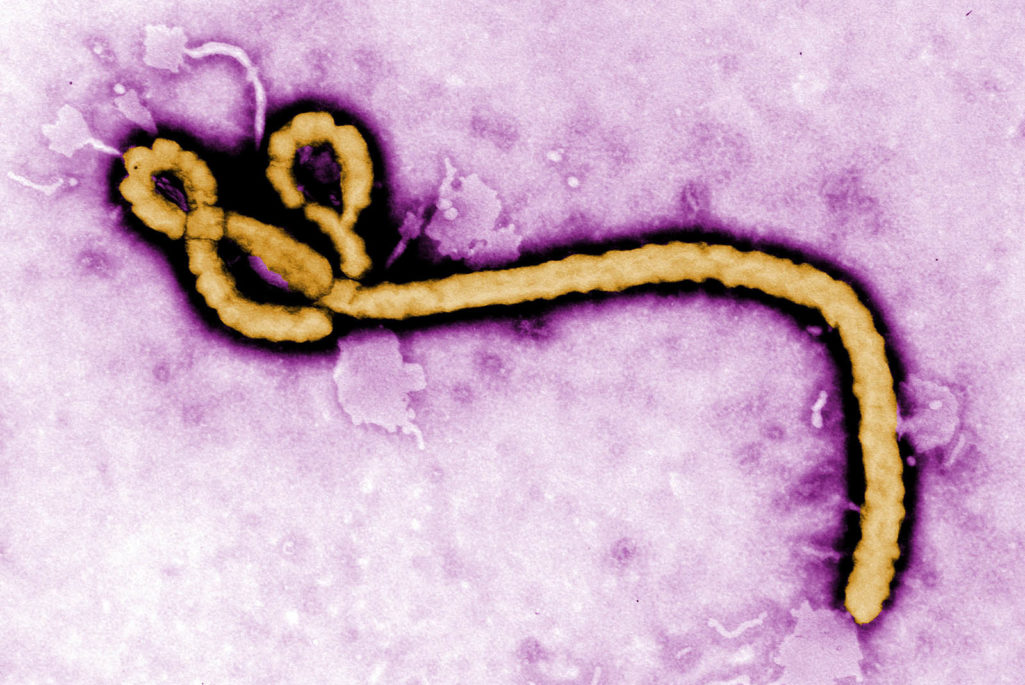Preventing Pandemic Through Public-Private Partnerships

In this handout from the Center for Disease Control, a colorized transmission electron micrograph of the Ebola virus is seen.
Photo: Center for Disease Control via Getty Images
A key lesson to draw from the handling of the Ebola crisis is that increased private sector engagement is a critical factor that will improve the response to the next global health crises.
Governments and policy-makers need to think about a global governance structure for infectious diseases that will encourage the engagement of private companies, including the insurance and risk-management sectors, especially through public-private partnerships (PPPs). Targeted impact investing can create a more resilient health infrastructure on the ground and fund vital new medical research.
With some creative thinking about impact investing, it may be possible through PPPs to begin to put the right infrastructure in place shortly after—or even before—the outbreak of the next crisis.
For example, people often assume that if there was a vaccine for Ebola, there would be no crisis. In fact, even if there were an effective vaccine for Ebola, it would have to reach remote parts of the affected and at-risk countries. It is sobering to recognize that each year, there are millions of children dying before the age of 5 from vaccine-preventable diseases because the vaccines are damaged before they reach the most remote areas. This is due to a breakdown in the “cold chain”—the ability to keep the vaccines between 2-8 degrees C—which is difficult in many parts of the developing world. So, in fact, our ability to control a crisis and save lives often boils down to a matter of logistics.
It is thought that there is no electricity to power vaccine fridges in remote regions. But this is not true, because the private sector that manages cell-phone masts has the incentive and resources to keep the power on at their sites at all times, even in remote parts of the world.
Energize the Chain, an organization my colleagues and I built, begins to solve the cold chain problem by forming public-private partnerships between the Ministries of Health and the local mobile phone operators and mobile phone tower owners to use the power, connectivity and information processing available at the remote towers to power and monitor vaccine refrigerators. This is a cost-effective, sustainable, scalable and locally owned solution to the cold chain problem.
We have rolled out this solution in Zimbabwe and now have 100 sites running in partnership with EcoNet, a telecoms company. The program successfully vaccinated hundreds of thousands of children last year and is being rolled out in Ghana and India.
This isn’t just about encouraging corporate social responsibly, although CSR in itself is an admirable private sector motivation. In fact, engagement is needed from the IT, telecoms and pharmaceutical sectors as well as capital markets, all of which, when integrated correctly, make the whole program greater than the sum of its parts. Unreliable energy sources, irregular equipment maintenance, lack of reliable data and the absence of accurate monitoring and performance evaluation all contribute to the overall weakness of the vaccine cold chain and the loss of lives. Energize the Chain is designed and implemented as a human-centered service system that solves this problem and corrects many of the problems of the existing cold chain, which is primarily human-based with little or no robust technology/computation/adaptation components.
Our ability to control a crisis and save lives often boils down to a matter of logistics.
Energize the Chain is implemented through public-private partnerships that integrate 1) distributed energy systems, 2) health systems, 3) supply chain logistics, 4) human behavior and 5) intelligent sensing and self-correcting systems for the optimized delivery of lifesaving vaccines to millions of men, women and children who live in challenging environmental conditions, especially in remote areas of the world that are energy poor. We incorporate technologies for sensing, actuation, coordination, communication and control to utilize the data transmitted from the remote mobile phone tower to an operational command platform. The data is then processed to monitor the performance of the refrigeration system, the real-time inventory and the impact of the solution on the local health system in order to improve the overall response to future situations.
Our group recognized that even if you can keep the vaccines secure, how do you ensure they are distributed correctly? In remote areas, it is impossible to track children with an electronic medical record system or even fingerprints, because they can change under the age of five. Refugees, orphans and other children may have no way of knowing what, if any, vaccines they received as infants. We are developing something called “infant biometrics” that uses the natural identifiers in children’s faces, which we hope will eliminate this problem.
This creates another set of problems, such as how to integrate medical information into databases with maximal security for moving populations or refugees. How can you tell when the child needs their next dose? How can you notify the manufacturers when more vaccines are required? These are issues that demand advanced big-data analytics, excellent connectivity and integrated logistics; it will fall to the partnerships between academics and the private sector to create solutions. At Energize the Chain, we are developing a High Impact Technology Solutions lab to investigate and solve these problems.
Even the best logistics in the world cannot prevent all health crises, so it is vital that medicine development keeps pace with new and emerging diseases.
However, generating and securing long-term funding for drug discovery and development is difficult, especially for therapies that do not create many multiples of return on investment. That is the case for most infectious diseases, diseases that predominantly affect very few individuals or diseases found in mid- and lower-income countries. Several mechanisms for incentivizing drug discovery in the private sector have been proposed, including patent pools, advanced market commitments, payment for eventual health impact, prizes and priority review vouchers.
Scientists are always aiming at a moving target, because a drug may be effective for a few years before the disease becomes resistant, making developing new medicines expensive and risky. Through smarter incentives, private sector capital can be encouraged to overcome these problems. An example that may be worth considering would be to create special “hybrid social impact funds” to invest in developing new drugs, which could attract people who will accept slightly lower returns in exchange for financing something worthwhile.
Developing an investment vehicle such that the funds are made tax-free during the basic research phase, say for the first three to five years, after which investors receive a warrant for the drugs that successfully navigate the entire testing and regulatory hurdles, could be an attractive option for those with a long-term outlook.




